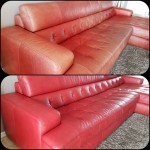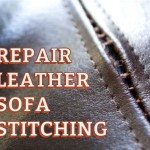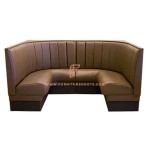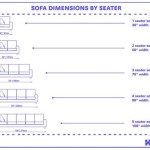How to Repair a Sagging Sofa Bed
A sagging sofa bed can be uncomfortable and unsightly. Fortunately, several methods exist to address this common issue, ranging from simple fixes to more involved repairs. Choosing the appropriate method depends on the cause and severity of the sag.
1. Identifying the Source of the Sag
Before attempting any repairs, it's crucial to pinpoint the reason for the sagging. This will help determine the best course of action. Common culprits include worn-out springs, a weakened frame, or compressed cushions. Carefully inspect the sofa bed in both the sofa and bed positions. Check the springs for rust, breaks, or loss of tension. Examine the frame for cracks, loose joints, or warped wood. Finally, assess the cushions for compression and loss of firmness.
If the sofa bed is older, the springs are often the primary source of sagging. Springs can lose their elasticity over time, leading to a noticeable dip in the seating or sleeping surface. A broken or damaged frame can also contribute significantly to sagging, especially if the frame is made of wood, which can weaken with age and use.
Cushion compression is another common culprit, particularly in sofa beds that are frequently used. The constant pressure can cause the filling material to compact, resulting in a less supportive and comfortable surface.
2. Addressing Cushion Compression
If cushion compression is the primary issue, several solutions can help restore firmness. Adding a layer of high-density foam on top of the existing cushions can provide additional support and lift. Alternatively, replacing the cushion filling entirely can offer a more long-term solution. Various cushion filling materials are available, including foam, down, and polyester fiberfill. Selecting a high-quality, dense filling material can prevent future compression and ensure lasting comfort.
When adding a foam topper, measure the cushions carefully to ensure a proper fit. Secure the foam topper to the existing cushion using upholstery adhesive or velcro strips to prevent it from shifting. If replacing the cushion filling, ensure the new filling is appropriately sized and shaped to fit the cushion covers snugly.
Regular fluffing and rotation of the cushions can also help prevent future compression. This simple practice helps distribute the filling material evenly and maintain the cushion's shape.
3. Repairing or Replacing Springs
For sagging caused by worn-out or broken springs, more extensive repairs are often necessary. Individual springs can sometimes be replaced, but if multiple springs are damaged, it may be more cost-effective to replace the entire spring system. This requires removing the sofa bed's upholstery and accessing the spring unit. While replacing individual springs can be a manageable DIY project, replacing the entire spring unit is often best left to professional upholsterers due to the complexity and specialized tools involved.
Before attempting any spring repairs, carefully inspect the entire spring system to identify all damaged or worn-out components. If only a few springs need replacing, use pliers to remove the broken springs and install new ones of the same size and type. Ensure the new springs are securely attached to the frame and surrounding springs.
4. Reinforcing the Frame
A weakened or damaged frame can also contribute significantly to sagging. Inspect the frame carefully for cracks, loose joints, or warped wood. Minor cracks can often be repaired using wood glue and clamps. Loose joints can be tightened by adding wood screws or reinforcing brackets. If the frame is significantly warped or damaged, it may need to be replaced entirely.
When reinforcing the frame, ensure all joints are securely fastened. Use high-quality wood glue and screws to ensure a strong and durable repair. If replacing the frame, choose a sturdy frame made of high-quality wood or metal to prevent future sagging.
Adding supporting boards beneath the frame can also help distribute weight and prevent further sagging. Cut the boards to fit the dimensions of the sofa bed frame and secure them using wood screws or brackets.
5. Preventing Future Sagging
Once the sofa bed has been repaired, several preventative measures can help maintain its shape and prevent future sagging. Regularly rotating and fluffing the cushions can help distribute the filling material evenly and prevent compression. Avoid overloading the sofa bed, as excessive weight can strain the frame and springs. Using a sofa bed mattress topper can also help distribute weight and protect the cushions from wear and tear.
Periodically inspect the frame and springs for signs of wear or damage. Addressing minor issues promptly can prevent them from becoming major problems later on. Following these preventative measures can help extend the lifespan of the sofa bed and ensure lasting comfort.

Easy Inexpensive Saggy Couch Solutions Diy Makeover Love Of Family Home

How To Fix Sagging Couch Cushions A That Sinks

How To Fix A Sagging Couch 14 Steps

How To Repair A Sagging Sofa

How To Fix A Sagging Couch 14 Steps

How To Fix A Sagging Couch With Plywood Or Particleboard Dengarden

How To Fix A Sagging Couch Repair Sofa Cushion Stuffing

Easy Inexpensive Saggy Couch Solutions Diy Makeover Love Of Family Home

4 Ways To Fix Sagging Sofa Cushions Wikihow

Why Your Sofa Bed Mattress Is Uncomfortable And How To Fix It








